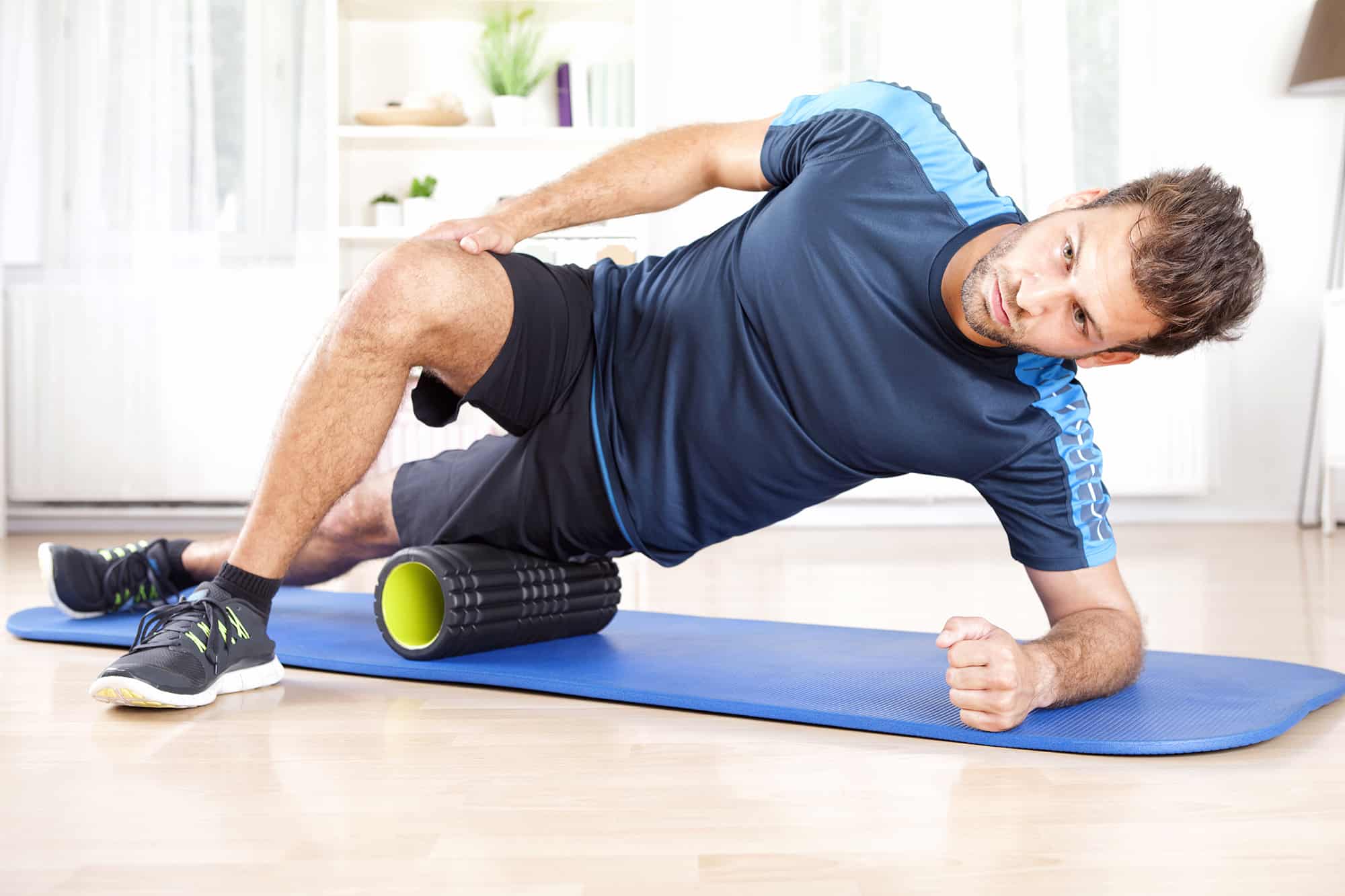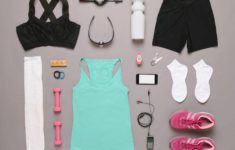The key to getting thicker (and bigger) thighs is exercising and getting more calories in than you burn. However, we cannot overlook that genetics have a significant role in your ability to gain weight in specific areas of your body (in this case thighs).
Maybe your body type is not conducive to having bigger thighs (and/or hips). But, with the right set of exercises, you can make progress, achieve bigger thighs and improve your overall fitness levels.
In this article, you will find helpful tips that will help you achieve your goal of having thick thighs (if that is your goal).
Table of Contents
Key Takeaways
- Wholesome food, water, sleep, and mental preparedness are essential for success.
- The right forms and weights suitability play a significant role in training different muscle groups.
- Exercises such as lunges, leg presses, squats, and deadlifts contribute to building thick thighs that look good.
How To Start?
Growing big thighs is not rocket science; however, you need to do a few things in order to start on the right foot. First, you will need to modify your exercises to suit your goal. Also, you will need to consume more calories (to promote muscle growth).
As mentioned, when trying to get thicker thighs, you need to eat more calories than you are burning. You need to be careful about the types of foods you are eating.
Ideally, you should be eating small meals five times a day, as suggested by bodybuilders. Also, you will need to eat before and after workouts to ensure your muscles have adequate fuel all throughout the day.
Try and eat whole food, including healthy carbohydrates such as quinoa, brown rice, and whole grains. Also, ensure every meal contains protein. Protein is the building block of muscles and should be an essential part of your diet.
Protein foods to consider are farm-raised meat, legumes, fish, and eggs. Ensure you stay hydrated throughout the day by drinking 8 to 10 glasses of water. This will help your body process protein better.
Before the Workout
The time you spend doing the workout tends to get all the credit, but what you do before and after the training is undoubtedly as important. Your workout is probably an hour-long; therefore, what you do the other 23 hours will impact your progress.
Things like quality sleep and good nutrition play a significant role in the effectiveness of your workout. This is why it is essential to prioritise sleep. Drinking water is a must before you set out to the gym to keep your energy levels at par.
Additionally, make sure you are wearing the right clothes and footwear. Being able to pull off certain poses and positions is about your comfort as much as your athletic flexibility. Comfortable leggings, sports bra, and sneakers are a must-have.
Exercise is not only physical but also mental. Before the workout, prepare yourself mentally to get started on the right attitude. You may need some music, a pep talk, or a reward system to get your mind right for workouts [1].
Warmup
Skipping your warmup session is a definite no, especially if you are planning to do strength training and/or cardio exercises. Warmup prepares your body for what comes next by raising your body temperature and increasing your range of motion.
A warm-up also decreases your chance of injury during workouts. The gradual body warmup helps the thigh muscles ease into a challenging workout rather than jumping from a resting state.
A good warmup also helps your blood vessels dilate, ensuring your thigh muscles get adequate oxygen. Raising your heart rate slowly helps minimise stress on your heart during workouts [2].
How To Use the Right Form
It is essential to understand the proper form for each exercise you do; otherwise, you may not get the results you are looking for. As a complete beginner, work with a certified personal trainer to help you determine the proper form for various exercises.
A tip to determine if you are using the proper form for thigh exercises is to pay attention to where you feel the burn. If you feel the burn elsewhere other than the thighs, your form is probably off.
A guiding factor to follow for the right form is maintaining good posture for all your exercises. Make sure you are not hunched forward or backward during exercise. Try to keep your shoulders, butt and spine aligned and in a neutral position for the right form.
Also, change up the angle of movements to work out every part of the muscles equally. You want to get stronger and build muscle mass within the entire muscle.
Lastly, keep your breathing pattern consistent. People tend to hold their breath during exercises and this can cause a strain during movement. Learn to exhale during the most challenging part to fuel the movement and ease the muscles.
Slowly Increase the Weight
With strength training, you cannot go ham and pick the heaviest weight possible. Start small and slow, giving your thigh muscles time to adapt while you increase weight.
At first, the lightest weight will feel challenging, but a few workouts in, it will start to feel lighter and more comfortable.
When you get to this point, increase the weights gradually to help the thigh muscles grow. Give the new weights a few weeks to allow your muscles to adapt to the change.
Ideally, you should stick with the weight that allows you to do all ten reps without pausing.
Target Different Muscle Group Each Time
Working out the same muscle each day will lead to exhaustion and possible injury. Give the specific muscle group a chance to rest and rebuild as you work on another one. The goal is to work out the thighs, give them a break and focus on your arms, chest, etc.
Spend a few days working on other muscles, then return to the thighs. The recovery period is an essential factor for muscle growth as much as the breaking down period. Muscles require at least 72 hours of rest between high-intensity weight-training workouts to repair [3].
Exercises
Here is a list of exercises you can engage in to get big and thicker thighs and lose weight in the process.
1. Squats
Exercises like squats target both the thighs and the hips; ideal if you are looking to get bigger hips and booty.
You can do a squat with a barbell to enhance muscle growth. In the beginning, you may need to go slow and do them a few times a week, then increase the frequency with time.
When doing squats, ensure your feet are shoulder-width apart with your toes pointed outwards slightly. Make sure your back is well-aligned and avoid bending over. You can also do single leg squats.
Start by taking a deep breath and contract your abs as you squat down to an almost 90-degree angle. Breathe out as you rise, preventing your knees from turning inward. If you have weights, make sure both hands are on the same level during the squat.
2. Deadlifts
Deadlifts target the back of your thighs and the hips, hence, are essential for building bigger legs. Stand with your legs hip-width apart and a barbell or a kettlebell in your hands. Take a deep breath and lower your hips.
Ease up your knees until the shins get in contact with the bar in front of you. Look forward and keep your chest up with a slight arch on your back. Pull the shoulders back and drive the hips into the bar. Lower the bar and repeat this form 10 reps 3 times.
3. Lunges
Lunges are the best with weights such as dumbbells or barbells. Start by stepping forward and lowering your upper body while keeping your torso upright. Take a deep breath as you go down and keep your knees within the distance of your toes.
You can repeat this for about 20 reps, rest for a minute, and repeat it 3 to 5 times more. This thighs workout works incredibly well if you want to get bigger legs and booty.
4. Bridges
Bridges isolate the booty muscles and hamstrings. Start by lying on your back. Keep the knees bent and feet flat on the floor. Tighten your abdominal and booty muscles by pushing the lower back into the ground before pushing up.
Raise your hips to create a straight line from your shoulders to your knees. Squeeze your abdominal muscles and pull your belly button towards the spine. Hold in this position for about 30 seconds and return to the starting floor position.
5. Donkey Kicks
Donkey kicks are otherwise known as hip extensions. These can be done on a mat without weights or with a resistance band. The most crucial factor is keeping your back rigid and flat, focusing on your hip rotations while keeping your lower body tight.
Start on all fours on a mat. Bend your knees and raise one hip as you exhale. Squeeze your butt and keep your lower body muscles as tight as possible when raising the thigh. Donkey kicks work the hip muscles (to give them curves and strong sides).
6. Leg Presses
Leg presses exercise the calves, glutes and hamstrings, all essential to get thicker thighs and hips. Using a leg press machine, position your feet at shoulder-width apart. While exhaling, press the platform forward until your legs extend fully.
Avoid locking your knee in this position.
FAQ
Why Am I Not Seeing Results Yet?
If you do not maintain the correct posture while performing the exercises, the muscles you intend to work out may not be fully engaged, and you won’t get to see the positive results.
The idea is to have a consistent routine working on different muscle groups on different days. You want all the involved muscles to grow uniformly for desirable results.
If you are not consistent with your workout, you won’t see results.
How To Get Thicker Thighs Faster?
Like other parts of the body, your thigh muscles will need time to grow and tone. But, if you are consistent with your workout plan, you should start to see results in two to four weeks. A good tip is to exercise a different muscle group each day (if you want to get quick results).
The Bottom Line
Getting thick thighs that look good is achievable as long as you are committed to the goal. The above tips and workouts can guide you on the journey and help you get thicker thighs.
With a consistent exercise routine and a healthy diet plan, you can achieve thicker thighs which will contribute to your overall fitness level.
References
- https://www.dailymail.co.uk/health/article-5367921/How-mentally-prepare-workout.html
- https://www.heart.org/en/healthy-living/fitness/fitness-basics/warm-up-cool-down
- https://pubmed.ncbi.nlm.nih.gov/12741861/






